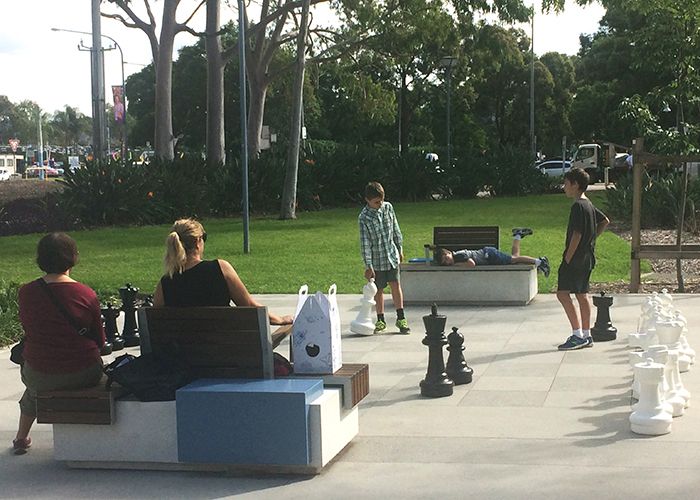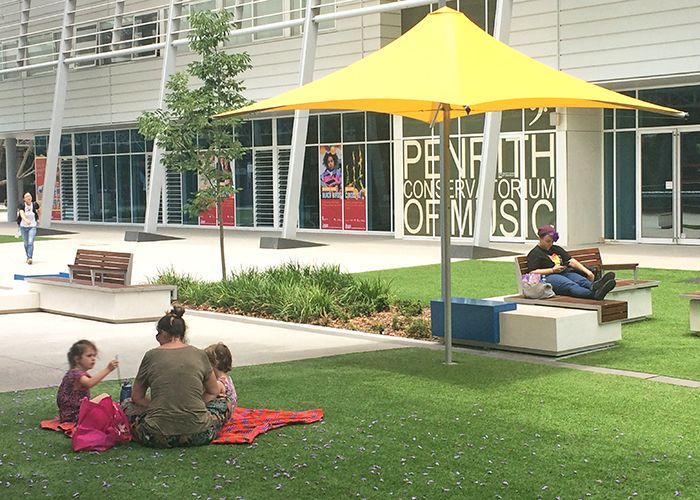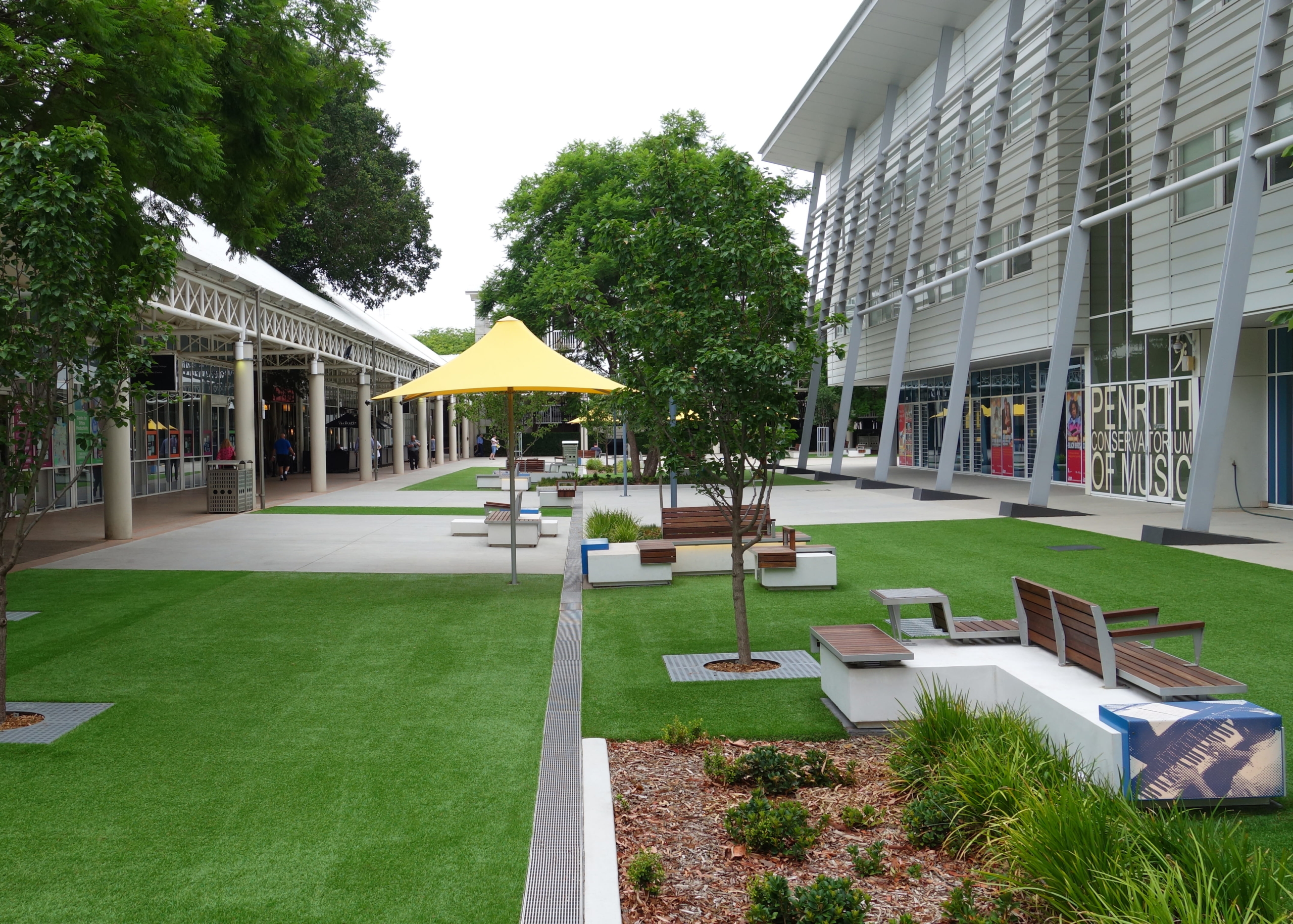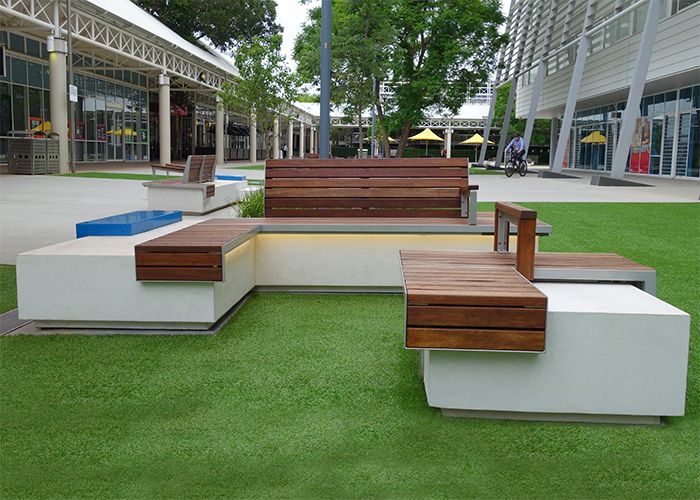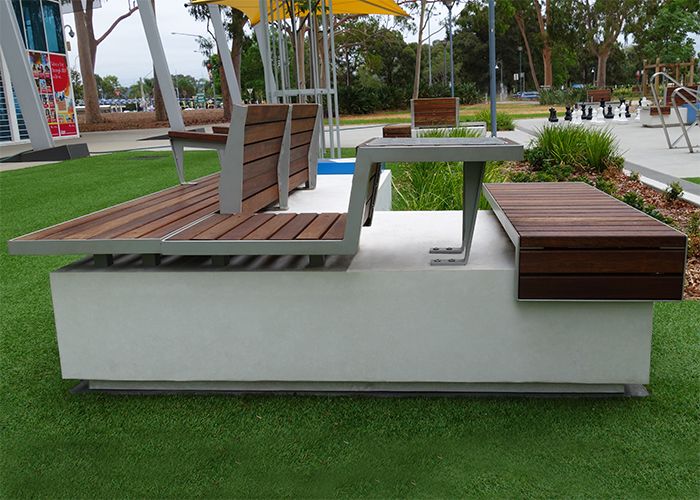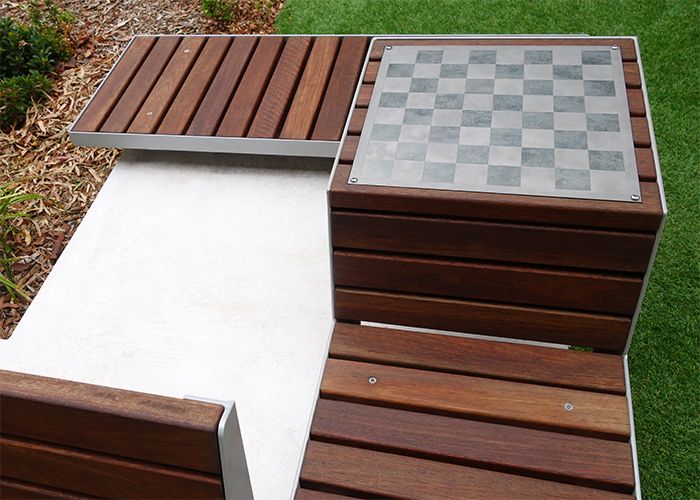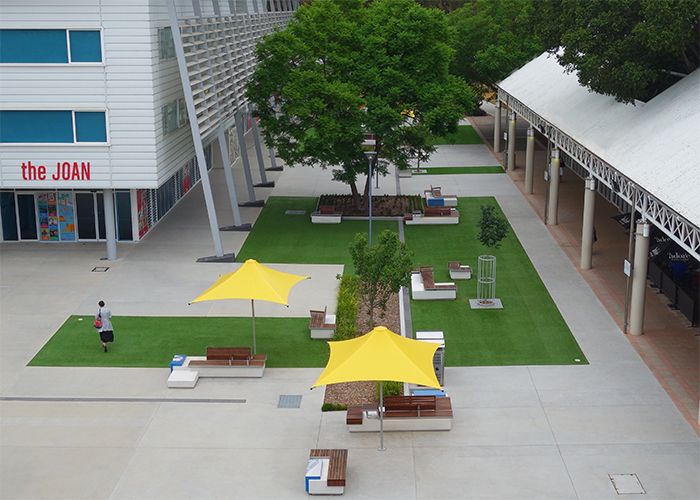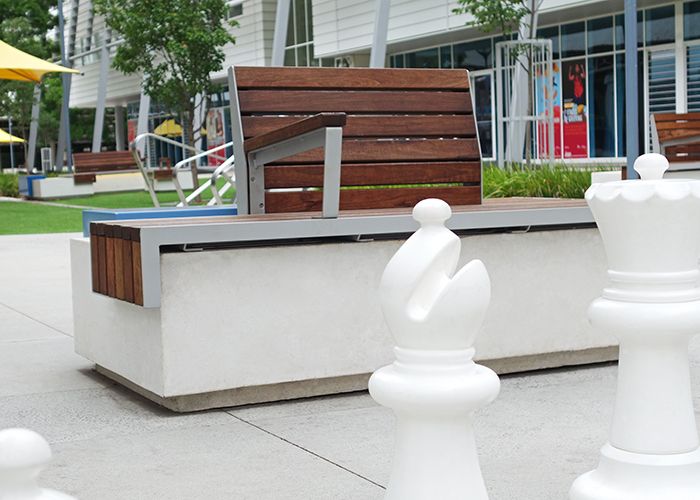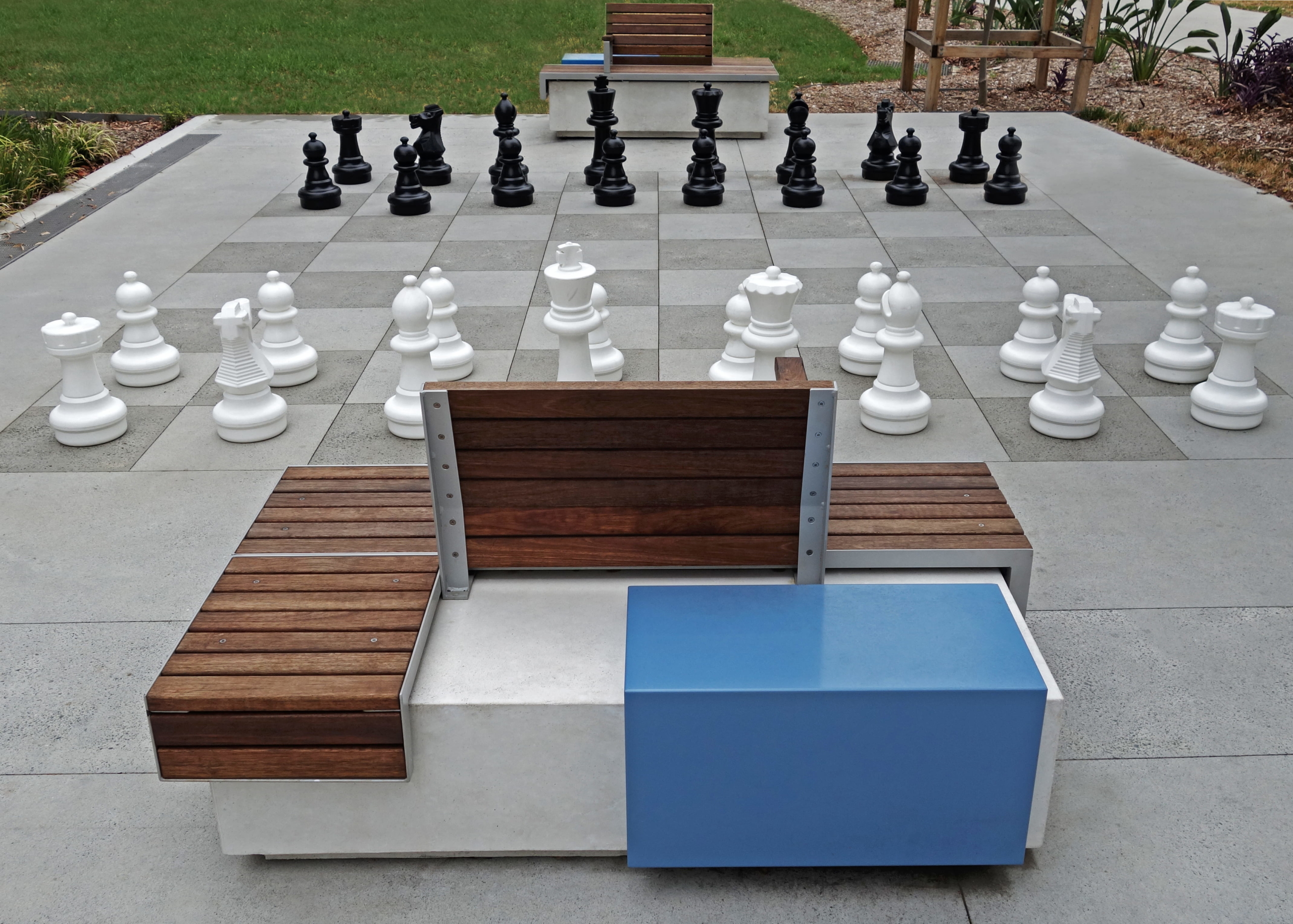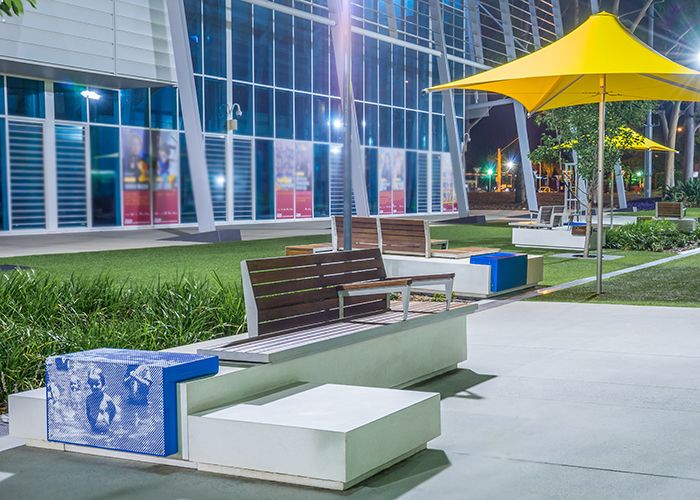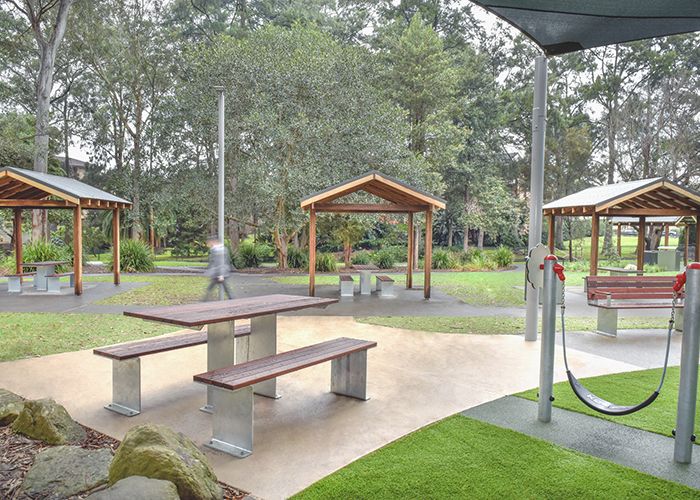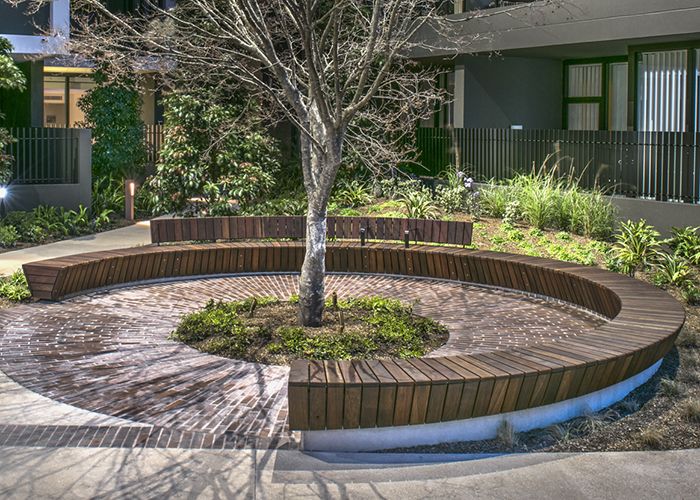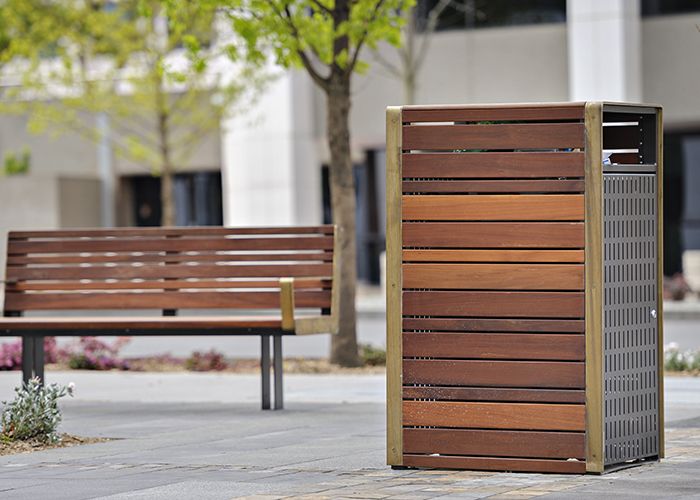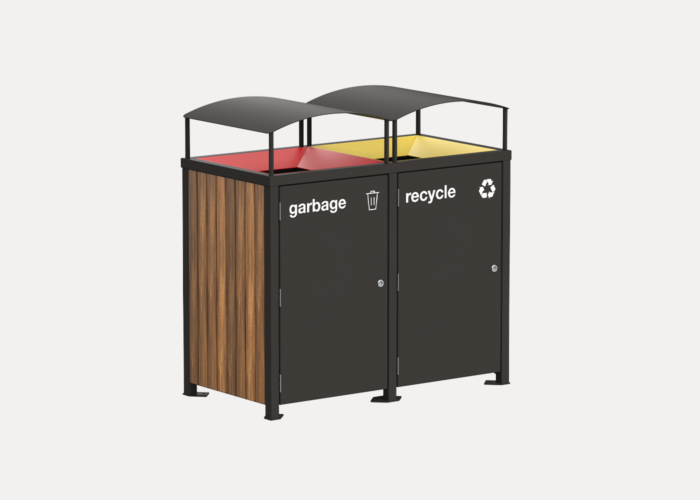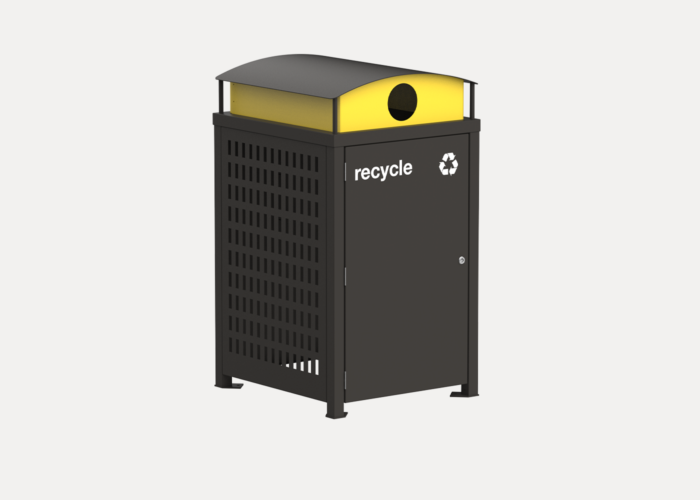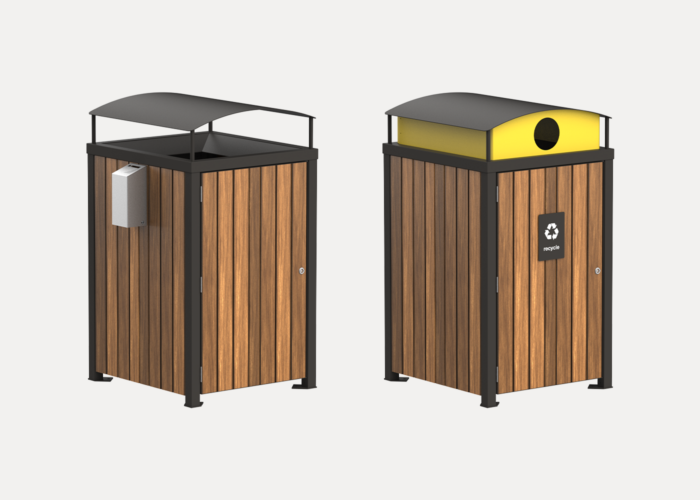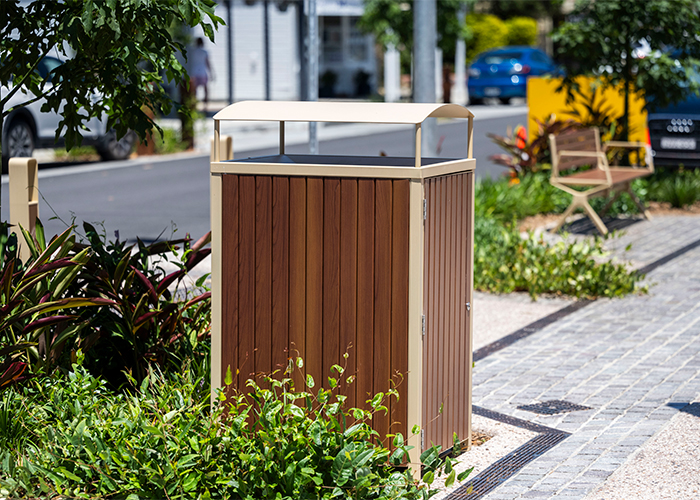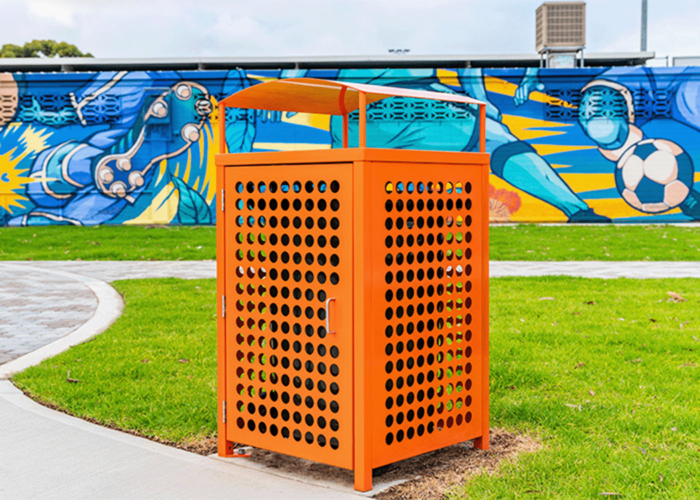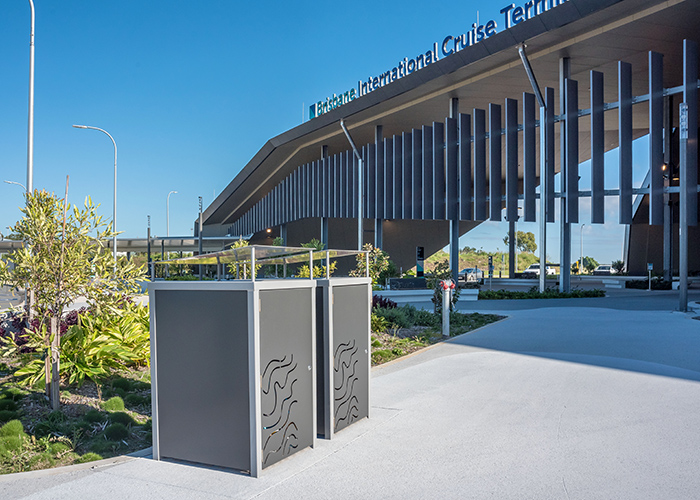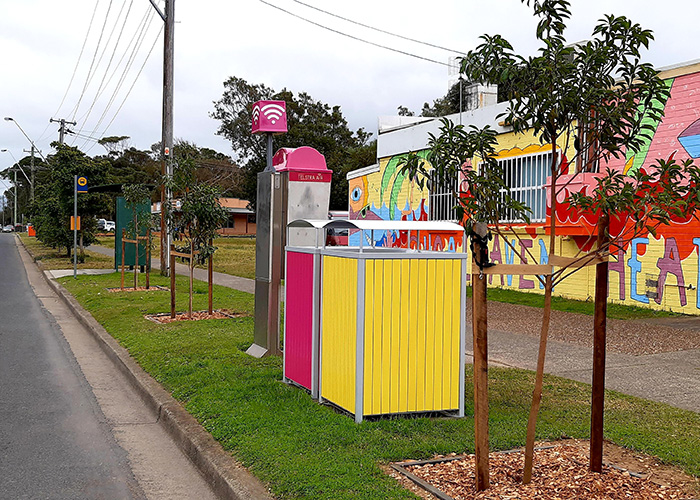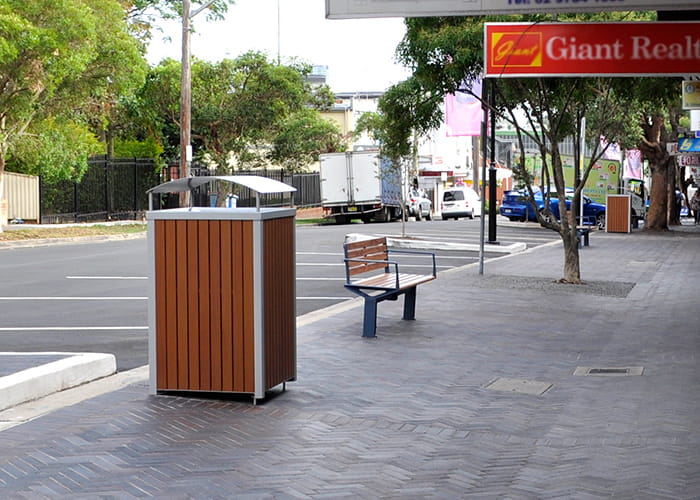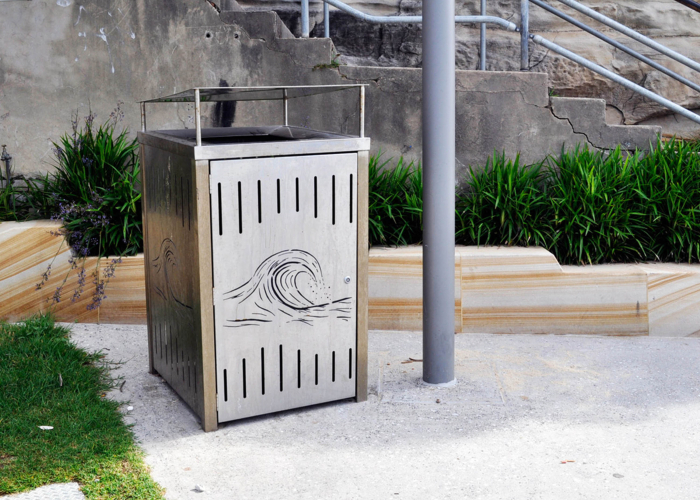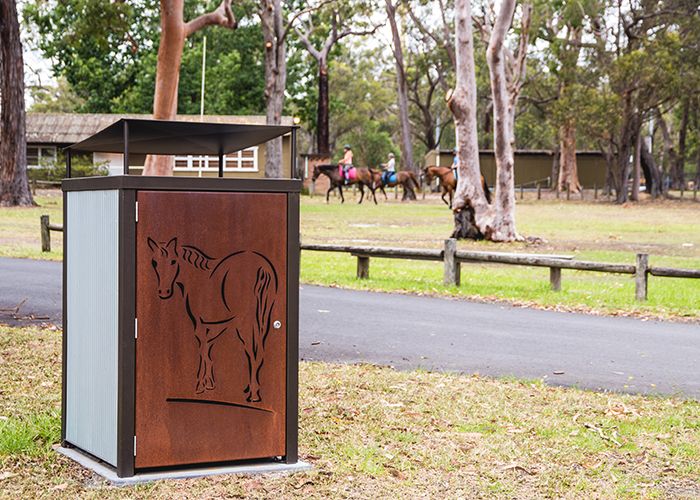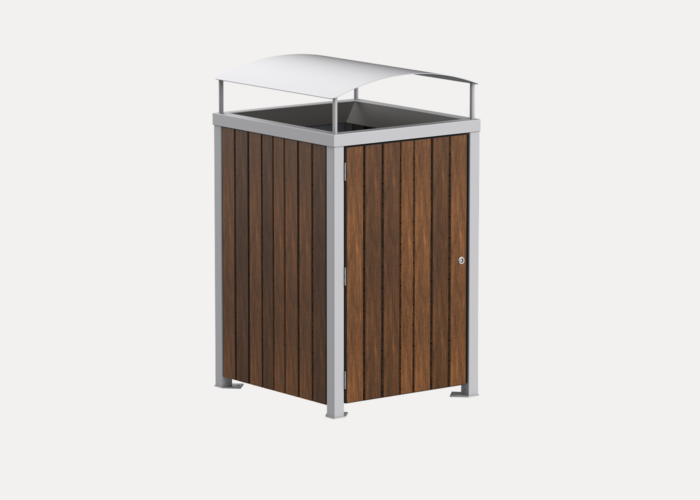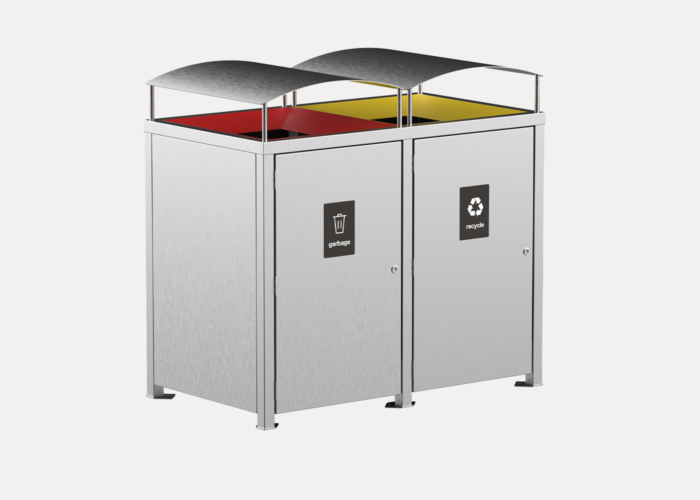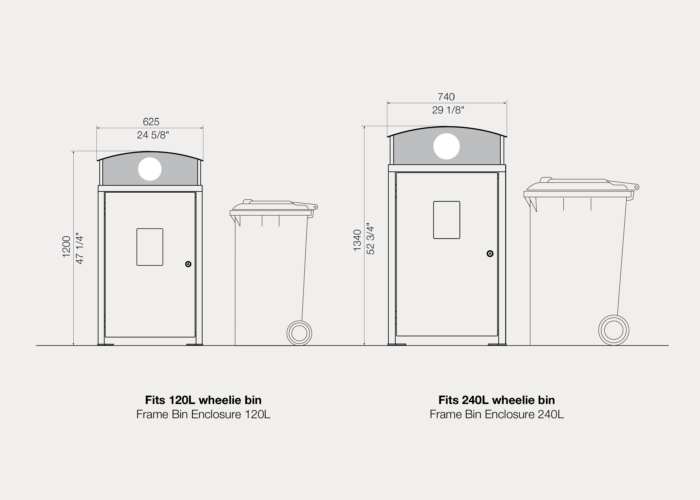A custom furniture suite brings light and life to a renewed outdoor space at the Penrith Civic Arts Precinct, also known as the Mondo, a small urban space where the popular Westfield Penrith, the Joan Sutherland Performing Arts Centre and Penrith City Council’s Civic Centre meet.
Landscape Architect OCULUS, responding to a brief from Penrith City Council, collaborated with Street Furniture Australia on a new site-specific furniture range.
An excerpt from the brief:
Seating creates a comfortable, useable, and active public environment where people can rest, socialise, eat, read, or people-watch. It is a simple gesture that can go far to create an important sense of place. Seating creates places where people can see and be seen. This ability to entice people to linger is the hallmark of great and successful public spaces.
“The public domain vision for Penrith’s city centre is founded on a place-making approach, and aims to create places that are ‘honest, easy and generous,'” says Karin Schicht, Landscape Architecture Supervisor with Penrith City Council.
“This formed the basis of Council’s brief to design a new suite of seating to be integrated with the concept design for the space.”
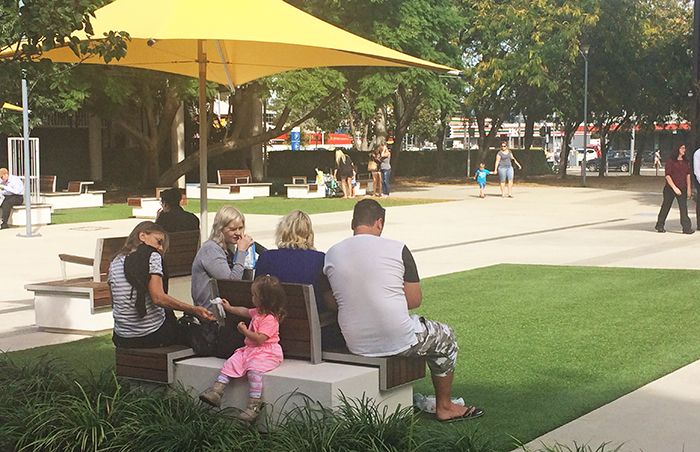
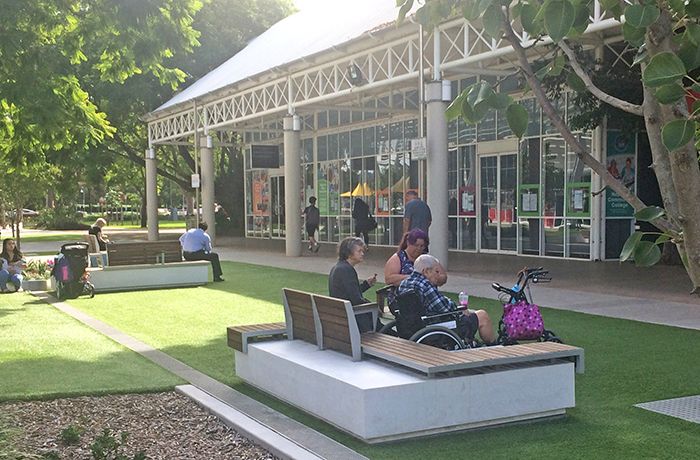
Intergenerational and inclusive seating. Photo: Karin Schicht, Penrith City Council.
The team created a series of five seats, in 10 different iterations.
Each seat features spotted gum battens and is mounted on a concrete plinth. Some include LED lighting strips for down-lighting, and one tabletop has a chessboard.
Art panels have also been integrated into some of the seating.
“We wanted to reflect ‘Penrith-ness’ in the seats, celebrating the connection between people and place,” says Schicht.
To this end, place-making and public art consultancy ARTSCAPE worked with OCULUS and Penrith City Council to explore artistic motifs and graphics to assist with place-branding, drawing out themes which related to ‘Penrith-ness,’ and contributed to the composition and illumination of the panels.
“We looked at how a multi-dimensional seating arrangement could provide opportunities for self-expression, given the Mondo is located next to a performance venue,” says David Cianci, Managing Director of ARTSCAPE.
The images are backlit with LED lighting strips, using an opal coloured vinyl substrate to diffuse light and allow them to glow at night.
“The art component of the seats represents the multifaceted life of the city and works thematically with the modular seating design,” says Simon Trick, Senior Landscape Architect with OCULUS.
“Penrith is made up of a multitude of people with diverse backgrounds, stories, ideas, experiences and talents … Like how an image is made up of a multitude of pixels that create an entire picture, we understand Penrith to be made up of individual characters who contribute to the entire character of Penrith,” he says.
“We took this concept of pixelation as a generator for our design development and created a number of forms that could interlock, rotate and flip to create numerous configurations, while still being simple to manufacture in a modular manner. We took this same theme with the creation of the artworks.”
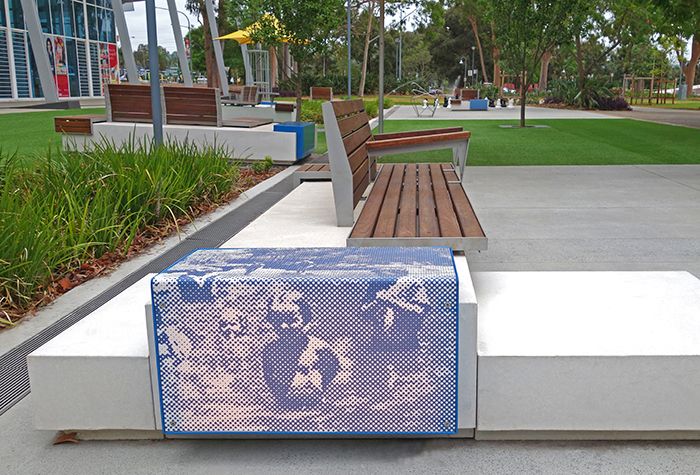
Reflecting the ‘Penrith-ness’ through pixelated and back-lit art.
Another key design consideration in the brief was for seating to be intergenerational and inclusive, meeting Council’s accessibility targets. This included a minimum of 40 per cent of seating with backs and armrests, two seat heights (450mm and 500mm) and ensuring adjacent wheelchair spaces to enable ‘in-line’ seating.
Penrith City Council worked closely with Street Furniture Australia to further develop the furniture to be suitable for manufacture.
“The attention to detail and aim for quality is a testament to the Street Furniture Australia team,” says Schicht.
“Street Furniture Australia were very helpful in assisting and providing advice on the buildability and delivery of the designs,” adds Trick.
“The Street Furniture Australia team also tested and developed solutions for wiring each concrete plinth, with the careful positioning of voids. The creation and testing of prototypes was extremely helpful in ironing out nuisances before we went into full production.”
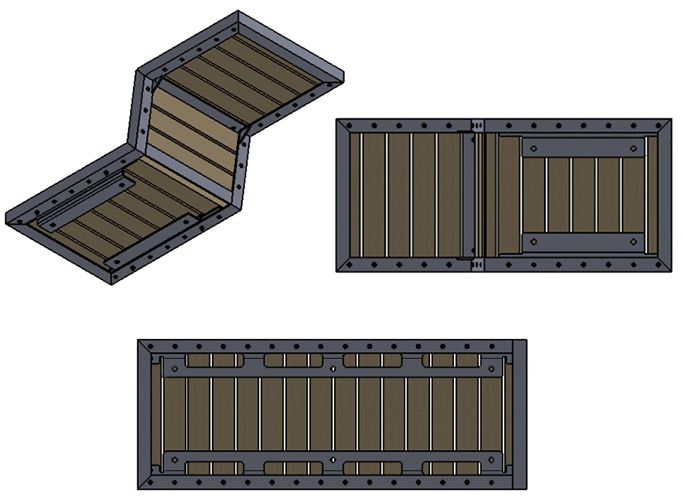
Design Sketches for the Mondo, Penrith
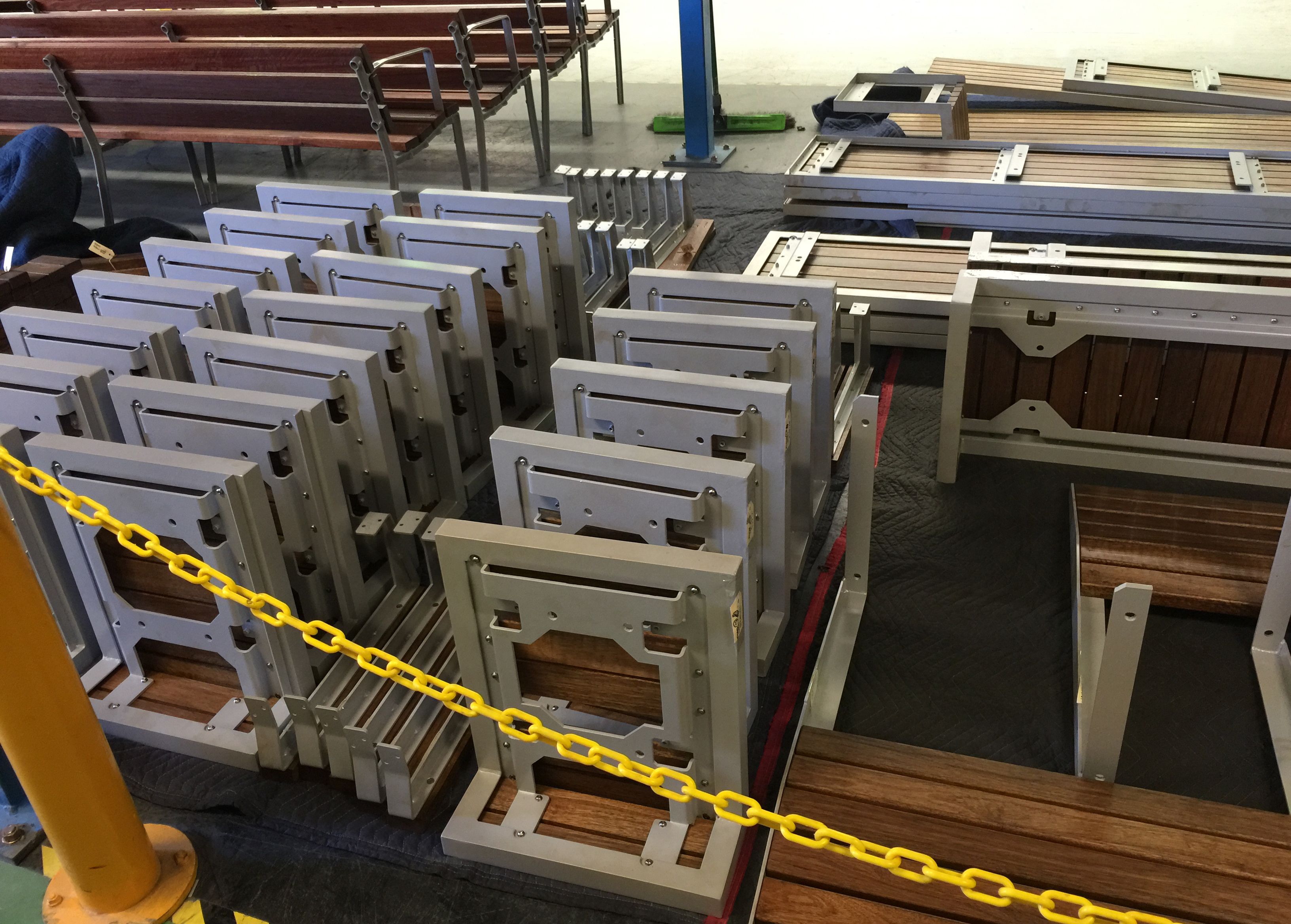
From sketch to reality. Seats in segments ready to go, at the Street Furniture Australia factory.
The resulting furniture, says Trick, provides a distinct sense of identity to the Mondo.
“The community has thoroughly welcomed the new vibrant space and it sees a high volume of people occupying the area to eat their lunch, wait for a performance at the theatre, meet up with friends, enjoy the sunshine, play some chess, check their phones, jump from seat to seat and generally enjoy a revitalised and unique space for Penrith,” he says.
Frame Bin Enclosures, with geometric perforations, support the seating in this refreshed local hotspot.
Seeing the different ways the public is interacting with the new space has been a pleasure, says Schicht.
“Whether a solo lunch-goer, weary parents with curious toddler’s taking time-out from shopping, or small groups meeting and socialising, the seating delivers choice, flexibility and is inherently Penrith,”
“It is a constant delight to witness the many ways the community has adapted to and embraced this place. They have made it their own.”
